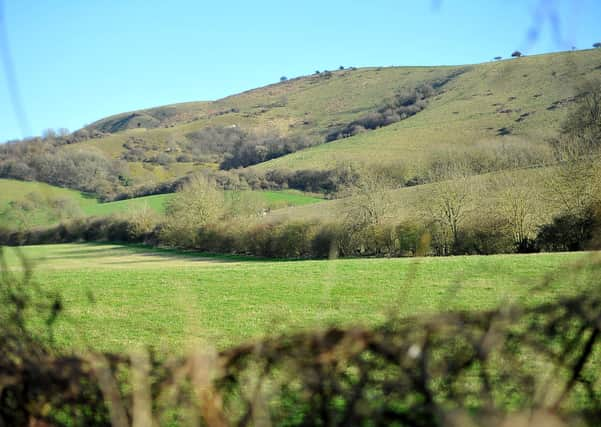New legislation ‘safeguards a tiny fraction of countryside’ West Sussex campaigners argue


The Environment Bill, a piece of legislation currently making its way though Parliament, would mandate a ten per cent biodiversity net gain for all new developments in England except for ‘irreplaceable habitats’.
But members of the Campaign to Protect Rural Henfield (CPRH) have raised concerns about a number of shortcomings in the bill as currently drafted and the potential impact these will have on the future of the countryside.
Advertisement
Hide AdAdvertisement
Hide AdThey believe that nature will be reduced by an algorithm to a single number ‘to be costed and traded on the housing market’ and suggest that not only do biodiversity measures need to take account of local context, such as connections between habitats, but also many benefits of nature are not directly linked to biodiversity at all.
A true assessment of environmental gain would present the individual benefits and losses, rather than being reduced to a single netted off figure, they added.
They also point to the problem of offsetting where one community might lose its easy access to nature when it is moved elsewhere to make way for housing.
A statement from the campaigners said: “The impact on biodiversity alone is not an adequate measure of nature’s loss. Development can generate multiple harms. The beauty of our countryside, the health and leisure benefits of country walks, clean air, tranquillity and distant views, count for nothing in the algorithm.”
Advertisement
Hide AdAdvertisement
Hide AdAlso highlighted is the first study involving the use of the algorithm, which showed substantial gaps between policy goals and implementation, as some developers were meeting obligations just through scrub and grassland patches integrated into their housing developments.
They are concerned that in practice the net gain algorithm could result in a tick-box approach that ignores local factors and undermines good decision making, especially given the lack of resources in some council planning departments.
The group concluded: “Protecting designated areas like national parks, areas of outstanding natural beauty and irreplaceable habitat types, safequards only a tiny fraction of our countryside.
“The time spans required for creating and establishing any woodland, mean that many semi-natural woodlands will in effect be irreplaceable. They are simply to become land available for development.
“The inherent value of our countryside is treated as zero.”
Advertisement
Hide AdAdvertisement
Hide AdThe Environment Bill’s report stage and third reading is scheduled in the House of Commons for tomorrow (Tuesday January 26).
A report on the bill’s committee stage highlights Labour’s concerns about ‘unintended consequences’ where the destruction of habitats and protected species could be allowed in return for new habitat creation elsewhere.
Greener UK has also raised concerns that the primary outcome of the proposals ‘will not be species recovery, but faster development with lower standards’.
The CPRH has written to its Horsham district councillors to share its concerns.
Advertisement
Hide AdAdvertisement
Hide AdHDC is currently reviewing its local plan. Its latest version, called a Regulation 19 document, was expected to be published in the coming weeks for a formal period of representation.
These comments would be passed, along with the plan itself, to a government-appointed planning inspector for examination.
But a spokesman for HDC said: “In advance of the publication of this next stage (Regulation 19) document, the council has followed Government guidelines and sought general advice from the planning inspectorate on the preparation of the local plan in order to ensure that everything required by an inspector will be provided.
“The advice received did not identify any significant omissions in terms of the matters that the plan is seeking to address. Before Regulation 19 is published, it will be necessary to have concluded discussions with statutory bodies such as Highways England, Natural England and other authorities. This work is ongoing, and the council cannot control the timescales in which these organisations can respond to us. In addition, these timescales have been impacted by measures to deal with the Covid-19 virus.
Advertisement
Hide AdAdvertisement
Hide Ad“The council will continue its work with the various statutory bodies, but the additional level of detail needed by the Regulation 19 consultation means that the timetable for the plan will have to change by some weeks. Once the council has a clearer picture of how long it will take to receive these detailed responses, a revised timetable will be published.
“It is currently anticipated that the Regulation 19 document is now likely to be published during the spring of 2021.”